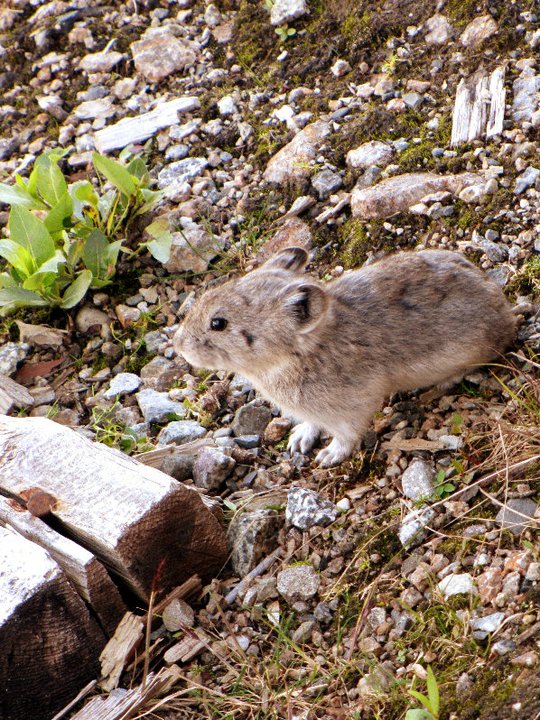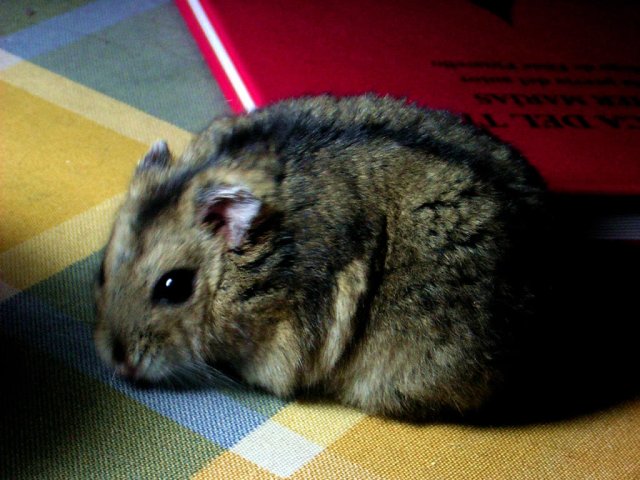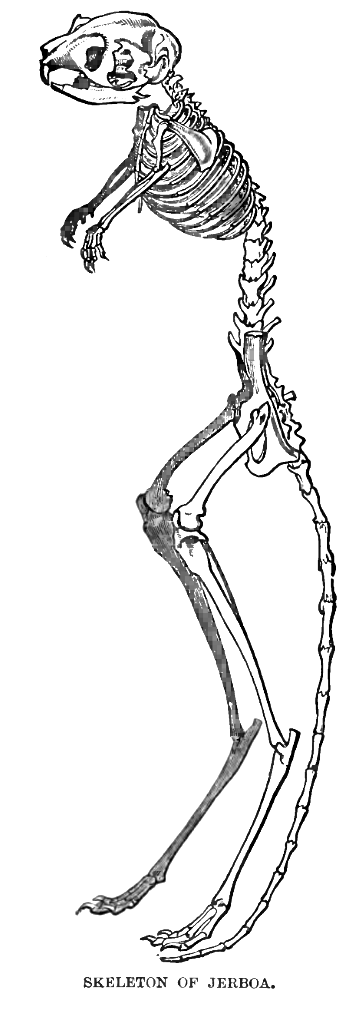|
Corsac Fox
The corsac fox (''Vulpes corsac''), also known simply as a corsac, is a medium-sized fox found in steppes, semi-deserts and deserts in Central Asia, ranging into Mongolia and northern China. Since 2004, it has been classified as ''least concern'' by IUCN, but populations fluctuate significantly, and numbers can drop tenfold within a single year. It is also known as the steppe fox. The word "corsac" is derived from the Russian name for the animal, ''"korsák"'' (корса́к), derived ultimately from Turkic "karsak". Description The Corsac fox is a medium-sized fox, with a head and body length of , and a tail long. Adults weigh from . It has grey to yellowish fur over much of the body, with paler underparts and pale markings on the mouth, chin, and throat. During the winter, the coat becomes much thicker and silkier in texture, and is straw-grey in colour, with a darker line running down the back. For a fox, it has small teeth and a wide skull. One source claims that this s ... [...More Info...] [...Related Items...] OR: [Wikipedia] [Google] [Baidu] |
Carl Linnaeus
Carl Linnaeus (23 May 1707 – 10 January 1778), also known after ennoblement in 1761 as Carl von Linné,#Blunt, Blunt (2004), p. 171. was a Swedish biologist and physician who formalised binomial nomenclature, the modern system of naming organisms. He is known as the "father of modern Taxonomy (biology), taxonomy". Many of his writings were in Latin; his name is rendered in Latin as and, after his 1761 ennoblement, as . Linnaeus was the son of a curate and was born in Råshult, in the countryside of Småland, southern Sweden. He received most of his higher education at Uppsala University and began giving lectures in botany there in 1730. He lived abroad between 1735 and 1738, where he studied and also published the first edition of his ' in the Netherlands. He then returned to Sweden where he became professor of medicine and botany at Uppsala. In the 1740s, he was sent on several journeys through Sweden to find and classify plants and animals. In the 1750s and 1760s, he co ... [...More Info...] [...Related Items...] OR: [Wikipedia] [Google] [Baidu] |
Tajikistan
Tajikistan, officially the Republic of Tajikistan, is a landlocked country in Central Asia. Dushanbe is the capital city, capital and most populous city. Tajikistan borders Afghanistan to the Afghanistan–Tajikistan border, south, Uzbekistan to the Tajikistan–Uzbekistan border, west, Kyrgyzstan to the Kyrgyzstan–Tajikistan border, north, and China to the China–Tajikistan border, east. It is separated from Pakistan by Afghanistan's Wakhan Corridor. It has a population of over 10.7 million people. The territory was previously home to cultures of the Neolithic and the Bronze Age, including the Bactria–Margiana Archaeological Complex, Oxus civilization in west, with the Indo-Iranians arriving during the Andronovo culture. Parts of country were part of the Sogdia, Sogdian and Bactria, Bactrian civilizations, and was ruled by those including the Achaemenid Empire, Achaemenids, Alexander the Great, the Greco-Bactrian Kingdom, Greco-Bactrians, the Kushan Empire, Kushans, the Kid ... [...More Info...] [...Related Items...] OR: [Wikipedia] [Google] [Baidu] |
Pika
A pika ( , or ) is a small, mountain-dwelling mammal native to Asia and North America. With short limbs, a very round body, an even coat of fur, and no external tail, they resemble their close relative the rabbit, but with short, rounded ears. The large-eared pika of the Himalayas and nearby mountains lives at elevations of more than . The name ''pika'' appears to be derived from the Tungus ''pika'', and the scientific name ''Ochotona'' is derived from the Mongolian word ''ogotno, оготно'', which means pika. It is used for any member of the Ochotonidae (), a family within the order of lagomorphs, the order which also includes the Leporidae (rabbits and hares). They are the smallest animal in the lagomorph group. Only one genus, ''Ochotona'' ( or ), is extant within the family, covering 37 species, though many fossil genera are known. Another species, the Sardinian pika, belonging to the separate genus '' Prolagus'', has become extinct within the last 2,000 years owi ... [...More Info...] [...Related Items...] OR: [Wikipedia] [Google] [Baidu] |
Hare
Hares and jackrabbits are mammals belonging to the genus ''Lepus''. They are herbivores and live Solitary animal, solitarily or in pairs. They nest in slight depressions called forms, and their young are precociality, able to fend for themselves shortly after birth. The genus includes the largest Lagomorpha, lagomorphs. Most are fast runners with long, powerful hind legs, and large ears that dissipate body heat. Hare species are native to Africa, Eurasia and North America. A hare less than one year old is called a "leveret". Members of the ''Lepus'' genus are considered true hares, distinguishing them from rabbits which make up the rest of the Leporidae family. However, there are five leporid species with "hare" in their common names which are not considered true hares: the hispid hare (''Caprolagus hispidus''), and four species known as red rock hares (''Pronolagus''). Conversely, several ''Lepus'' species are called "jackrabbits", but classed as hares rather than rabbits. The p ... [...More Info...] [...Related Items...] OR: [Wikipedia] [Google] [Baidu] |
Ground Squirrel
Ground squirrels are rodents of the squirrel family (Sciuridae) that generally live on the ground or in burrows, rather than in trees like the tree squirrels. The term is most often used for the medium-sized ground squirrels, as the larger ones are more commonly known as marmots (genus ''Marmota'') or prairie dogs, while the smaller and less bushy-tailed ground squirrels tend to be known as chipmunks (genus ''Tamias''). Together, they make up the "marmot Tribe (biology), tribe" of squirrels, Marmotini, a clade within the large and mainly ground squirrel subfamily Xerinae, and containing six living genera. Well-known members of this largely Holarctic group are the marmots (''Marmota''), including the American groundhog, the chipmunks, the susliks (''Spermophilus''), and the prairie dogs (''Cynomys''). They are highly variable in size and Morphology (biology), habitus, but most are remarkably able to rise up on their hind legs and upright posture, stand fully erect comfortably for pr ... [...More Info...] [...Related Items...] OR: [Wikipedia] [Google] [Baidu] |
Hamster
Hamsters are rodents (order Rodentia) belonging to the subfamily Cricetinae, which contains 19 species classified in seven genera. They have become established as popular small pets. The best-known species of hamster is the golden or Syrian hamster (''Mesocricetus auratus''), which is the type most commonly kept as a pet. Other hamster species commonly kept as pets are the three species of dwarf hamster, Campbell's dwarf hamster (''Phodopus campbelli''), the winter white dwarf hamster (''Phodopus sungorus'') and the Roborovski hamster (''Phodopus roborovskii''), and the less common Chinese hamster (''Cricetulus griseus''). Hamsters feed primarily on seeds, fruits, vegetation, and occasionally burrowing insects. In the wild, they are crepuscular: they forage during the twilight hours. In captivity, however, they are known to live a conventionally nocturnal lifestyle, waking around sundown to feed and exercise. Physically, they are stout-bodied with distinguishing features ... [...More Info...] [...Related Items...] OR: [Wikipedia] [Google] [Baidu] |
Jerboa
Jerboas () are the members of the family Dipodidae. They are hopping desert rodents found throughout North Africa and Asia. They tend to live in hot deserts. When chased, jerboas can run at up to . Some species are preyed on by little owls (''Athene noctua'') in central Asia. Most species of jerboas have excellent hearing that they use to avoid becoming the prey of nocturnal predators. The typical lifespan of a jerboa is around 2–3 years. Taxonomy Jerboas, as previously defined, were thought to be paraphyletic, with the jumping mice (Zapodidae) and birch mice (Sminthidae) also being classified in the family Dipodidae. However, phylogenetic analysis split all three as distinct families, leaving just the jerboas in Dipodidae and revealing them to be a monophyletic group. This animal has a body length (including the head) of between , with an additional of tail, which is always longer than the full body. Jerboa dental records reveal a slow increase in crown heights, which cor ... [...More Info...] [...Related Items...] OR: [Wikipedia] [Google] [Baidu] |
Gerbillinae
Gerbillinae is one of the subfamilies of the rodent family Muridae and includes the gerbils, jirds, and sand rats. Once known as desert rats, the subfamily includes about 110 species of African, Indian, and Asian rodents, including sand rats and jirds, all of which are adapted to arid habitats. Most are primarily active during the day, making them diurnal (but some species, including the common household pet, exhibit crepuscular behavior), and almost all are omnivorous. The gerbil got its name as a diminutive form of "jerboa", an unrelated group of rodents occupying a similar ecological niche. Gerbils are typically between long, including the tail, which makes up about half of their total length. One species, the great gerbil (''Rhombomys opimus''), originally native to Turkmenistan, can grow to more than . The average adult gerbil weighs about . One species, the Mongolian gerbil ('' Meriones unguiculatus''), also known as the ''clawed jird'', is a gentle and hardy animal ... [...More Info...] [...Related Items...] OR: [Wikipedia] [Google] [Baidu] |
Vole
Voles are small rodents that are relatives of lemmings and hamsters, but with a stouter body; a longer, hairy tail; a slightly rounder head; smaller eyes and ears; and differently formed molars (high-crowned with angular cusps instead of low-crowned with rounded cusps). They are sometimes known as meadow mice or field mice. Vole species form the subfamily Arvicolinae with the lemmings and the muskrats. There are approximately 155 different vole species. Description Voles are small rodents that grow to , depending on the species. Females can have five to ten litters per year, though with an average lifespan of three months and requiring one month to adulthood, two litters is the norm. Gestation lasts for three weeks and the young voles reach sexual maturity in a month. As a result of this biological exponential growth, vole populations can grow very large within a short time. One mating pair can produce 100 offspring every year. Voles outwardly resemble several other ... [...More Info...] [...Related Items...] OR: [Wikipedia] [Google] [Baidu] |
Caucasus
The Caucasus () or Caucasia (), is a region spanning Eastern Europe and Western Asia. It is situated between the Black Sea and the Caspian Sea, comprising parts of Southern Russia, Georgia, Armenia, and Azerbaijan. The Caucasus Mountains, including the Greater Caucasus range, have conventionally been considered as a natural barrier between Europe and Asia, bisecting the Eurasian landmass. Mount Elbrus, Europe's highest mountain, is situated in the Western Caucasus area of Russia. On the southern side, the Lesser Caucasus includes the Javakheti Plateau and the Armenian highlands. The Caucasus is divided into the North Caucasus and South Caucasus, although the Western Caucasus also exists as a distinct geographic space within the North Caucasus. The Greater Caucasus mountain range in the north is mostly shared by Russia and Georgia as well as the northernmost parts of Azerbaijan. The Lesser Caucasus mountain range in the south is mostly located on the territory of sout ... [...More Info...] [...Related Items...] OR: [Wikipedia] [Google] [Baidu] |
Siberia
Siberia ( ; , ) is an extensive geographical region comprising all of North Asia, from the Ural Mountains in the west to the Pacific Ocean in the east. It has formed a part of the sovereign territory of Russia and its predecessor states since the lengthy conquest of Siberia, which began with the fall of the Khanate of Sibir in 1582 and concluded with the annexation of Chukotka in 1778. Siberia is vast and sparsely populated, covering an area of over , but home to roughly a quarter of Russia's population. Novosibirsk, Krasnoyarsk, and Omsk are the largest cities in the area. Because Siberia is a geographic and historic concept and not a political entity, there is no single precise definition of its territorial borders. Traditionally, Siberia spans the entire expanse of land from the Ural Mountains to the Pacific Ocean, with the Ural River usually forming the southernmost portion of its western boundary, and includes most of the drainage basin of the Arctic Ocean. I ... [...More Info...] [...Related Items...] OR: [Wikipedia] [Google] [Baidu] |






